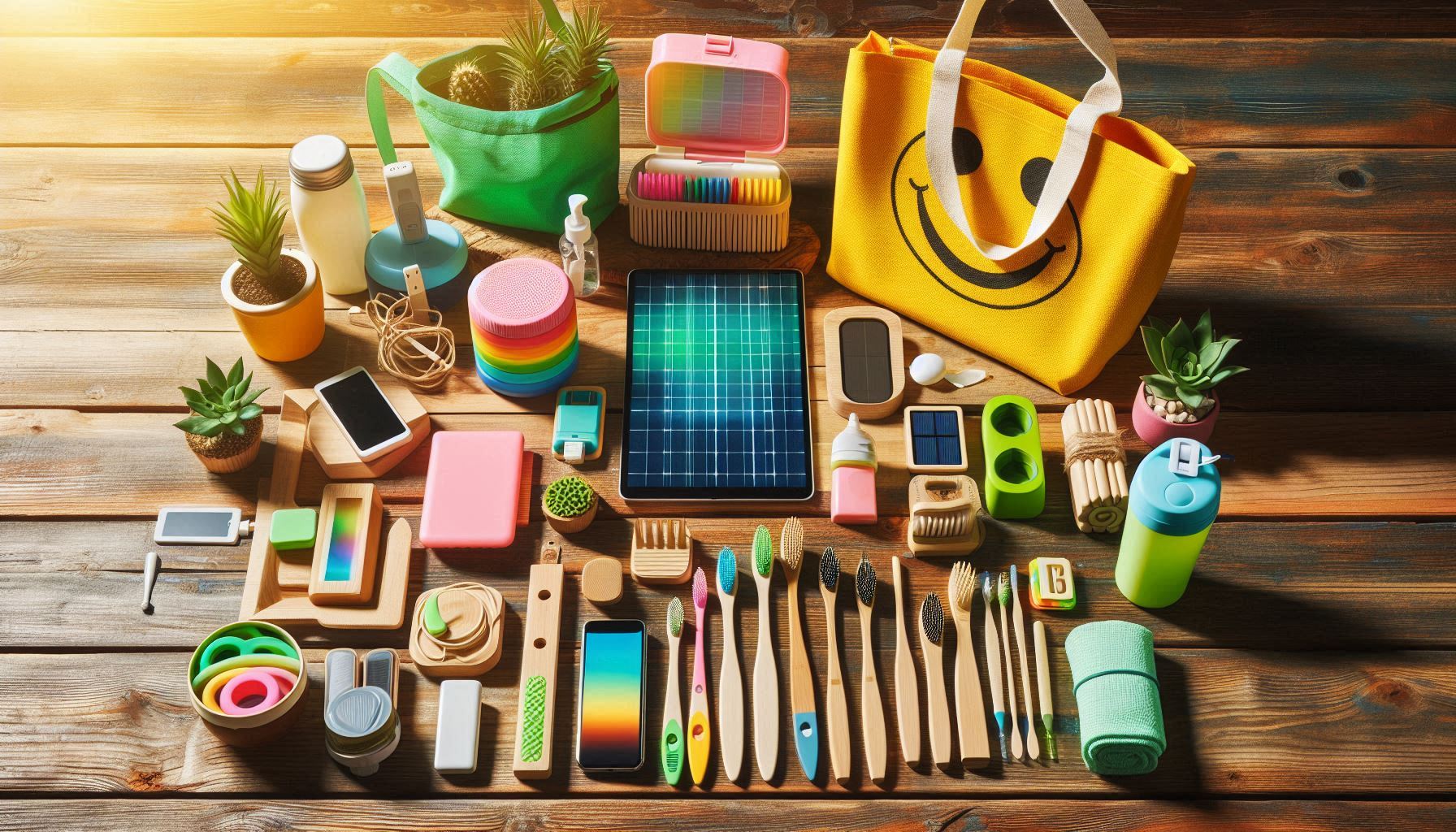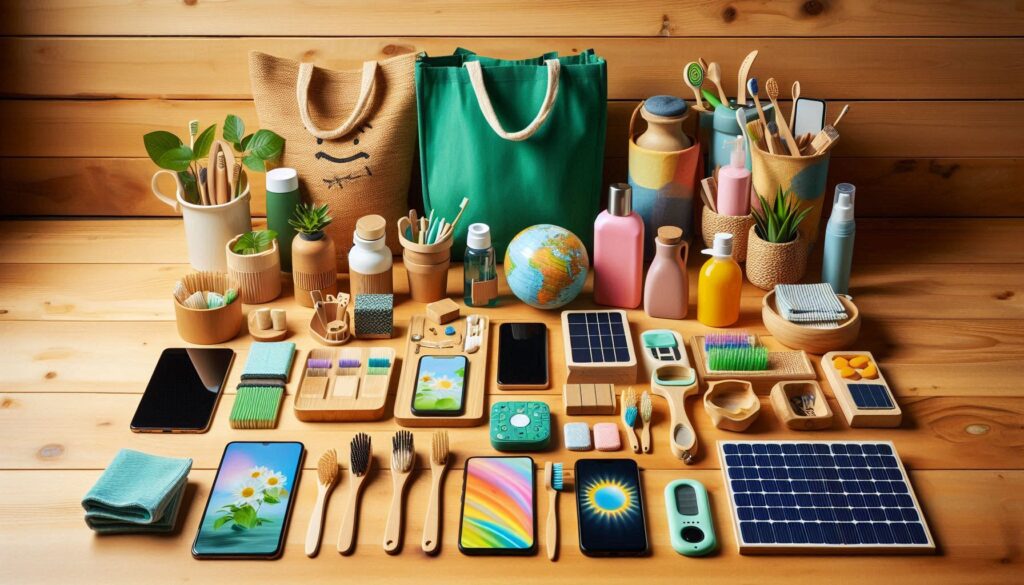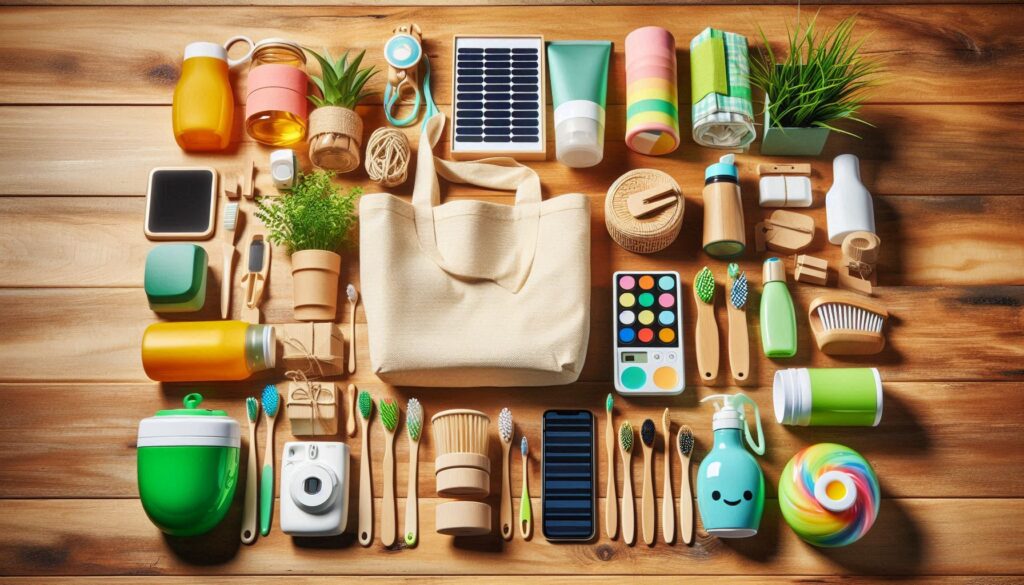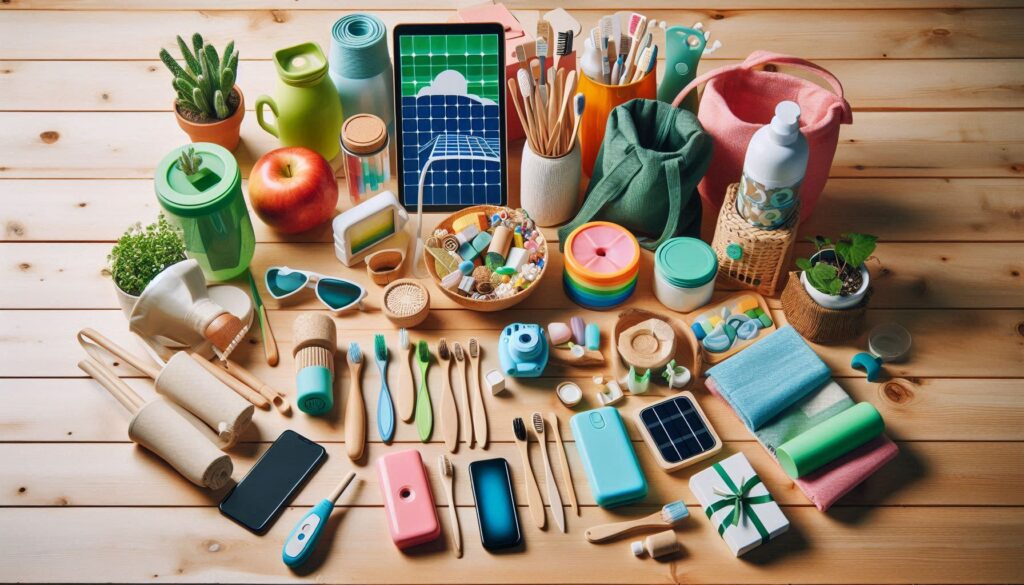Table of Contents
Introduction

Most people think eco-friendly products cost more and don’t work as well as regular stuff. That’s wrong. After trying tons of green products, many actually work better and save money over time. This guide covers practical eco-friendly swaps that regular families can afford – from cleaners that actually clean to baby products that don’t cause rashes. No expensive specialty items, just smart choices for your budget and health.
Eco-Friendly Cleaning Products
Getting Real About Clean Without Chemicals
Chemical free cleaning products skip the nasty stuff that makes your eyes water and throat burn. Natural household cleaners rely on basic things – salt scrubs away grime, lemon juice cuts grease, baking soda absorbs odors and stains. Biodegradable cleaning products dissolve completely when they hit water systems instead of building up in fish and plants like regular detergents do. Non-toxic disinfectants use rubbing alcohol or that bubbly hydrogen peroxide from the medicine cabinet to zap bacteria without creating toxic clouds in your bathroom. Homemade eco-friendly cleaning solutions beat store prices every time – a spray bottle with diluted castile soap and some essential oil drops cleans everything from windows to baseboards. Green cleaning products for home use have finally stopped being wimpy – modern formulas actually tackle grease splatters and soap rings without multiple applications. When people ask are eco cleaning products worth it?, consider this – no more headaches from bleach fumes, no more burning hands from scrubbing with harsh chemicals, no more worry about pets licking cleaned floors. Vinegar as eco-friendly cleaner handles calcium buildup on faucets, sticky jar residue, and even fabric softener duties in the washing machine. Plant-based cleaning products pull cleaning power straight from coconut husks and orange peels instead of petroleum refineries. The best eco-friendly cleaning products prove you don’t need laboratory-made solvents to get rid of everyday dirt and mess.
Homes & Gardens Review).
Kitchen Stuff That Actually Helps the Planet

Beeswax food wraps work way better than plastic wrap once you get the hang of warming them with your hands – they stick to bowls and wrap around cheese or half an onion perfectly. My kids love using reusable kitchen storage bags for their snacks because they come in fun colors and don’t rip like those cheap plastic baggies that always split open in backpacks. Sustainable kitchen tools like my grandmother’s old wooden spoons still work perfectly after thirty years while plastic ones melt near hot pans or crack from dishwasher heat. Bamboo cutlery set fits easily in purses or lunch boxes, so you never have to use those terrible plastic forks from takeout places that bend when you try eating anything tougher than pudding. Eco-friendly dishwashing soap gets dishes actually clean without that weird slippery feeling regular soap leaves behind – plus it doesn’t make bubbles that take forever to rinse off. Eco-friendly kitchen sponges last much longer than regular ones because natural fibers don’t fall apart as quickly, and they don’t get that gross smell after a few days of use. Biodegradable trash bags hold garbage just fine but disappear in compost heaps instead of sitting in dumps forever like regular plastic bags do. Zero-waste kitchen products cut down on all those packages and containers that immediately go in the trash after one usehttp://(Onya Life Article). Compostable food containers keep leftovers fresh, then you can toss them in your compost bin where they turn into dirt instead of piling up in landfills.
Making Your Place Actually Green Without Going Broke

Natural laundry detergent gets clothes clean without that chemical smell that sticks around for days – my neighbor switched after her baby kept getting rashes from regular detergent residue. Solar-powered garden lights are brilliant because they charge themselves during the day, then turn on automatically when it gets dark, no wiring or electric bills involved. Stainless steel water bottles don’t get gross like plastic ones do – no weird taste, no cracks where bacteria hide, and they actually keep water cold instead of warm and nasty. Reusable coffee cups pay for themselves pretty quick since most coffee places give you a discount for bringing your own, plus you don’t burn your fingers on those flimsy paper cups anymore. Energy-efficient home items slash your electric bill fast – those LED bulbs cost more upfront but last forever and use way less power than regular bulbs that burn out every few months. Eco-friendly home decor looks better than fake stuff because natural materials age nicely instead of chipping, fading, or falling apart like plastic decorations do. Recycled home furniture often beats new furniture for quality since older pieces were made when companies actually built things to last decades instead of breaking right after warranty expires. Sustainable home accessories like hemp rugs and cork coasters handle daily wear better than synthetic versions that crack, stain, or lose their shape quickly. Green alternatives for home use replace wasteful everyday items with smarter versions that work better and don’t fill up trash cans with packaging and broken pieces.
BudgetRoots guide on eco-friendly dropshipping
Clothes and Gear That Don’t Wreck the Planet
Organic cotton tote bags handle heavy groceries without ripping like plastic bags do, plus they wash clean when they get dirty instead of ending up in landfills after one trip to the store. Bamboo fabric clothing feels incredibly soft against skin and breathes better than synthetic materials that trap sweat and smell funky after a few hours of wear. Sustainable clothing brands make clothes that actually last – my sister bought a jacket three years ago that still looks new while her fast fashion stuff falls apart after a few washes. Recycled fashion products turn old plastic bottles and fabric scraps into surprisingly stylish pieces that you’d never guess came from trash if nobody told you. Vegan leather bags look and feel like real leather but don’t crack or peel like cheap fake leather does, plus they clean up easily with just soap and water. Eco-friendly phone cases protect phones just as well as regular cases while being made from plant materials that break down naturally instead of adding to plastic waste when you upgrade phones. Biodegradable sunglasses work perfectly for protecting eyes from sun glare, then they decompose in compost instead of sitting in dumps forever like regular plastic frames that never break down no matter how long they sit there.
Safe Care for Babies and Grown-Ups

TooChemical-free baby shampoo never stings eyes like regular shampoo does when it accidentally drips down during bath time, plus it rinses out completely without leaving that slippery residue that makes hair look greasy. Biodegradable baby wipes clean up messes just as well as regular wipes but break down quickly in septic systems instead of clogging pipes or sitting in landfills for decades like those thick synthetic ones. Natural diaper creams soothe red skin faster than petroleum-based creams because ingredients like coconut oil and zinc oxide actually heal irritation instead of just creating a barrier over the problem. Eco-friendly baby clothing made from organic cotton feels incredibly soft against sensitive skin and doesn’t shrink or fade after washing like clothes treated with harsh chemicals do. Organic skincare products work better for adults too because they don’t contain alcohols and synthetic fragrances that dry out skin or cause allergic reactions that leave faces red and itchy. Cruelty-free beauty products perform just as well as brands that test on animals, proving you don’t need to hurt animals to make effective makeup and lotions that actually improve how skin looks and feels. Plastic-free skincare packaging uses glass jars and metal tubes that can be reused or recycled properly instead of adding to the massive pile of cosmetic containers that never break down in dumps.
Do eco-friendly products actually work as well as regular ones?
Most do, and some work better. Natural cleaning products handle everyday messes just fine, bamboo kitchen tools last longer than plastic, and organic cotton clothes feel softer than synthetic fabrics. The key is buying quality eco products, not cheap knockoffs.
Are eco-friendly products more expensive?
Upfront costs can be higher, but most save money long-term. LED bulbs last years longer than regular ones, reusable bags replace hundreds of plastic bags, and homemade cleaners cost pennies compared to store brands.
How do I know if a product is really eco-friendly?
Look for specific certifications like USDA Organic, Energy Star, or Forest Stewardship Council labels. Avoid vague terms like “natural” or “green” without backing details. Check ingredient lists for actual plant-based or mineral components.
What’s the easiest way to start using eco-friendly products?
Start with products you use most often. Switch your dish soap, laundry detergent, and light bulbs first. Then gradually replace things as they run out or break instead of throwing away stuff that still works.
Are eco-friendly products safe for kids and pets?
Generally much safer than conventional products because they don’t contain harsh chemicals, synthetic fragrances, or toxic fumes. Always read labels though – natural doesn’t automatically mean safe for everyone.
Can I make my own eco-friendly products at home?
Absolutely. Basic cleaners using vinegar, baking soda, and dish soap work great for most jobs. Food wraps from beeswax and cotton fabric are easy to make. Homemade versions often work better and cost less than store-bought.
Do eco-friendly products last as long as regular ones?
Many last longer. Wooden kitchen tools can last decades, stainless steel bottles don’t crack like plastic, and quality organic cotton clothes hold up better than synthetic fabrics that pill and fade quickly.
Conclusion
Look, switching to eco-friendly stuff isn’t rocket science. Most green products work just as well as regular ones, and plenty work better. Yeah, some cost more upfront, but they usually last longer and save money down the road. Plus you’re not breathing in weird chemicals or worrying about what’s in the products your kids touch every day. Start with one or two things – maybe swap your dish soap or grab some reusable bags. You don’t have to change everything overnight. Just replace stuff as you run out or when things break. Your family stays healthier, you probably save some cash, and the planet doesn’t get trashed as much. Pretty simple deal when you think about it.
